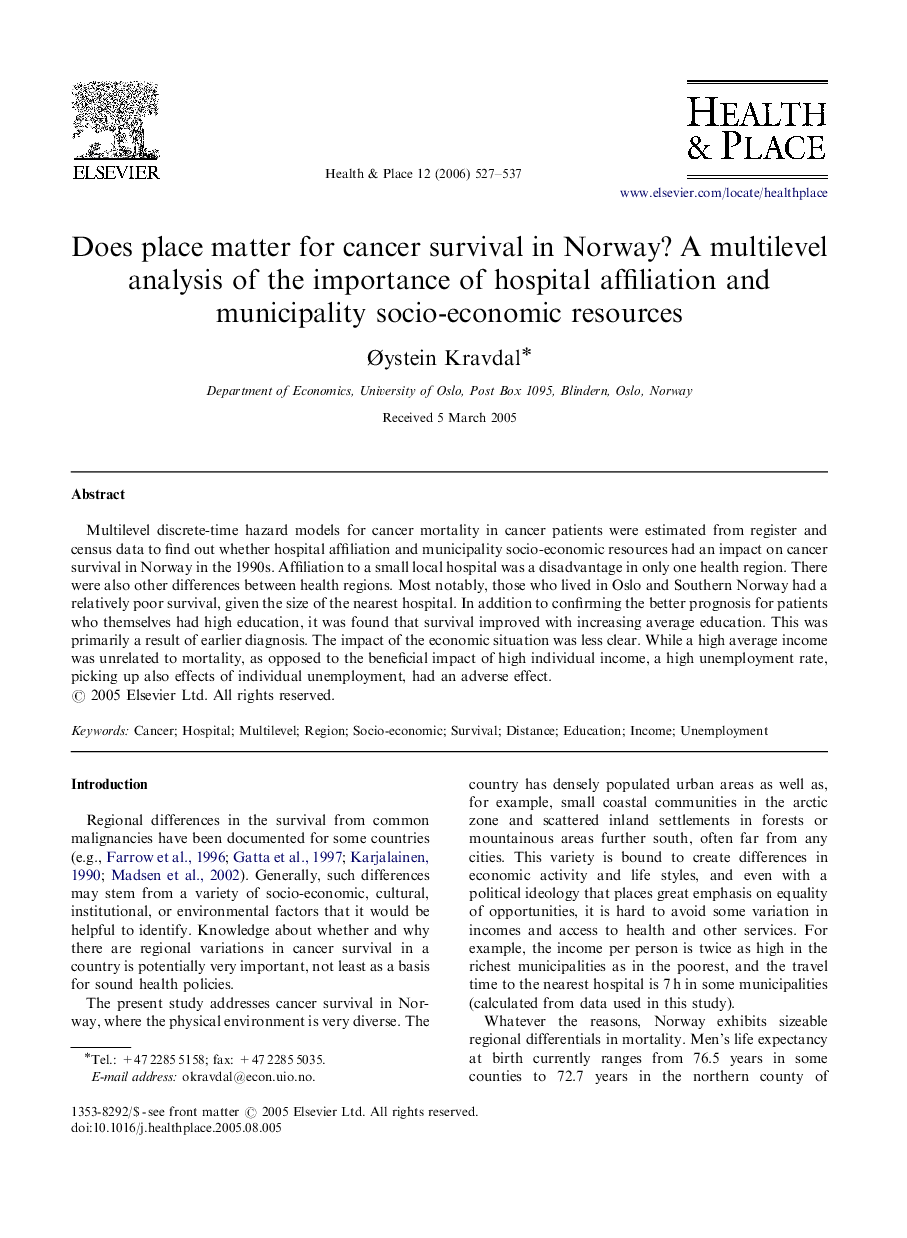| Article ID | Journal | Published Year | Pages | File Type |
|---|---|---|---|---|
| 1048977 | Health & Place | 2006 | 11 Pages |
Multilevel discrete-time hazard models for cancer mortality in cancer patients were estimated from register and census data to find out whether hospital affiliation and municipality socio-economic resources had an impact on cancer survival in Norway in the 1990s. Affiliation to a small local hospital was a disadvantage in only one health region. There were also other differences between health regions. Most notably, those who lived in Oslo and Southern Norway had a relatively poor survival, given the size of the nearest hospital. In addition to confirming the better prognosis for patients who themselves had high education, it was found that survival improved with increasing average education. This was primarily a result of earlier diagnosis. The impact of the economic situation was less clear. While a high average income was unrelated to mortality, as opposed to the beneficial impact of high individual income, a high unemployment rate, picking up also effects of individual unemployment, had an adverse effect.
